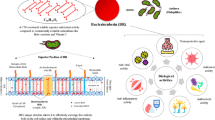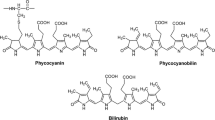Abstract
This study compared the inhibitory effects of roasted black bean (Rhynchosia nulubilis, seomoktae, RoS) extracts with raw seomoktae (RaS: control) extract on RANKL-mediated RAW264.7 cell differentiation after the determination of isoflavones content as well as antioxidant and antiinflammatory activities. The RoS extracts (RoS90-20, RoS100-20, RoS110-20, and RoS120-20) had significantly (p<0.05) higher isoflavones (genistein, daidzein, and glycitein) and better antioxidant activity than the RaS extract. Especially, RoS110-20, which was roasted at 110°C for 20 min, has the highest amounts of soy-derived compounds. The RoS110-20 extract significantly reduced LPS-induced nitric oxide (NO) and prostaglandin (PGE2) production compared to the RaS extract. The RoS110-20 extract showed a higher inhibitory effect on the expression of NFATc1 in RANKL-induced RAW 264.7 cells than the RaS extract without any evidence of cytotoxicity under western blotting and tartrateresistant acid phosphatase staining (TRAP). The results of this study suggest that roasting increased the concentration of soy-derived compounds and improved the antioxidant and anti-inflammatory activities of RoS110-20 extract compared with RaS. In addition, the differentiation of RANKL-mediated RAW264.7 cells was effectively inhibited by the RoS110-20 extract due to its enhanced antioxidant and anti-inflammatory activities caused by roasting, confirming its potential for ameliorating bone loss.
Similar content being viewed by others
References
Schuit S, van der Klift M, Weel AE, de Laet CE, Burger H, Seeman E, Hofman A, Uitterlinden AG, van Leeuwen JP, Pols HA. Fracture incidence and association with bone mineral density in elderly men and women: The rotterdam study. Bone 34: 195–202 (2004)
Kuiper GG, Lemmen JG, Carlsson B, Corton JC, Safe SH, van der Saag PT, van der Burg B, Gustafsson JA. Interaction of estrogenic chemicals and phytoestrogens with estrogen receptor beta. Endocrinology 139: 4254–4263 (1998)
Zhang X, Shu XO, Li H, Yang G, Li Q, Gao YT, Zheng W. Prospective cohort study of soy food consumption and risk of bone fracture among postmenopausal women. Arch. Intern. Med. 165: 1890–1895 (2005)
Blois MS. Antioxidant determination by the use of a stable free radical. Nature 181: 1198–1200 (1958)
Wimalawansa SJ. A four-year randomized controlled trial of hormone replacement and bisphosphonate, alone or in combination, in women with postmenopausal osteoporosis. Am. J. Med. 104: 219–226 (1998)
Roodman GD. Advances in bone biology: The osteoclast. Endocr. Rev. 17: 308–332 (1996)
Choi SH. Methanol extract of Ficus carica inhibits osteoclastogenesis in RAW264.7 cell. PhD thesis, Chonbuk National University, Jeonju, Korea (2009)
Arjmandi BH, Alekel L, Hollis BW. Dietary soybean protein prevents bone loss in an ovariectomized rat model of osteoporosis. J. Nutr. 126: 161–167 (1996)
Ananarajah AP, Schwarz EM. Anti-RANKL therapy for inflammatory bone disorders. J. Cell. Biochem. 97: 226–232 (2006)
Um SJ, Kang IS, Cho Y. Study on the role of estrogen receptor-alpha in Yakkong and soybean induced proliferation of MG-63 human osteoblastic cells. J. Nutr. Health 38: 512–520 (2005)
Kim HG, Kim GW, Oh H, Yoo SY, Kim YO, Oh MS. Influence of roasting on the antioxidant activity of small black soybean (Glycine max L. Merrill). LWT-Food Sci. Technol. 44: 992–998 (2011)
Lee JH, Lee BW, Kim B, Kim HT, Lo JM, Baek IY, Seo WT, Kang YM, Cho KM. Changes in phenolic compounds (isoflavones and phenolic acid) and antioxidant properties in high-protein soybean (Glycine max L., cv. Saedanbaek) for different roasting conditions. J. Korean Soc. Appl. Biol. Chem. 56: 605–612 (2013)
Lee MH, Cho JH, Kim JC, Kim BK. Effect of roasting conditions on the antioxidant activities of tertary buckwheat. Korean J. Food Sci. Technol. 46: 390–393 (2014)
Coward L, Kirk M, Albin N, Barnes S. Analysis of plasma isoflavones by reversed-phase HPLC-multiple reaction ion monitoring-mass spectrometry. Clin. Chim. Acta 247: 121–142 (1996)
Naik GH, Priyadarsini KI, Naik DB, Gangabhagirathi R, Mohan H. Studies on the aqueous extract of Terminalia chebula as a potent antioxidant and a probable radioprotector. Phytomedicine 20: 530–538 (2004)
Jeong JH, Jung H, Lee SR, Lee HJ, hwang KT, Kim TY. Anti-inflammatory activities of the extracts from black berry fruits and wine. Food Chem. 123: 338–344 (2010)
Marcocci L, Maguire JJ, Droy-Lefaix MT, Packer L. The nitricoxide-scavenging properties of ginkgo biloba extract EGb 761. Biochem. Bioph. Res. Co. 201: 748–755 (1994)
Anderson JJB, Anthony MS, Cline JM, Washburn SA, Garner SC. Health potential of soy isoflavones for menopausal women. Public Health Nutr. 2: 489–504 (1999)
Setchell JRD. Phytoestrogens: The biochemistry, physiology, and implications for human health of soy isoflavones. Am. J. Clin. Nutr. 68: 1333S–1346S (1998)
Lee CH, Yang L, Xu JZ, Yeung SYV, Huang Y, Chen ZU. Relative antioxidant activity of soybean isoflavones and their glycosides. Food Chem. 90: 735–741 (2005)
Chien JT, Hsieh HC, Kao TH, Chen BH. Kinetic model for studying the conversion and degradation of isoflavones during heating. Food Chem. 91: 425–434 (2004)
Daniel R. Analysis of soy isoflavone conjugation in vitro in human blood using liquid chromatography mass specrometry. Drug Metab. Dispos. 28: 298–307 (1999)
Sharma P, Gujral HS. Antioxidant activity of barely as affected by extrusion cooking. Food Chem. 131: 1406–1413 (2012)
Nicoletta P, Roberta R, Min Y, Catherine RE. Screening of dietary carotenoids and carotenoid-rich fruit extracts for antioxidant activities applying 2,2’-azinobis (3-ethylbenzo-thiazoline-6-sultonic acid) radical cation decolorization assay. Method. Enzymol. 299: 379–389 (1999)
Takahashi R, Ohmori R, Kiyose C, Momiyama Y, Ohsuzu F, Kiodo K. Antioxidant activities of black and yellow soybeans against low density lipoprotein oxidation. J. Agr. Food Chem. 53: 4578–4582 (2005)
Kim MJ, Kim KS. Functional and chemical composition of hwanggumkong, yakong, and huktae. Korean J. Food Cook. Sci. 21: 844–850 (2005)
Lee HJ, Kim NY, Jang MK, Son HJ, Sohn DH, Lee SH, Ryu JH. A sesquiterpene, dehydrocostus lactone, inhibits the expression of inducible nitric oxide sysnthase and TNF-alpha in LPS-activated macrophage. Planta Med. 65: 104–108 (1999)
Yoo JH, Yang KS. Constituents of pyrus pyrifolia with inhibitory activity on the NO production and the expression of iNOS and COX-2 in macrophages and microglia. Nat. Prod. Sci. 18: 183–189 (2012)
Sadowska-Krowicka H, Mannick EE, Oliver PD, Sandoval M, Zhang XJ, Eloby- Chiless S, Clark DA, Miller MJS. Genistein and gut inflammation: Role of nitric oxide. P. Soc. Exp. Biol. Med. 217: 351–357 (1998)
Suda T, Takahashi N, Udagwa N, Jimi E, Gillespie MT, Martin TJ. Modulation of osteoclast differentiation and function by the new members of the tumor necrosis factor receptor and ligand families. Endocr. Rev. 20: 345–357 (1999)
Nakashima T, Takayanagi H. Osteoimmunology: Cross talk between the immune and bone systems. J. Clin. Immunol. 29: 555–567 (2009)
Author information
Authors and Affiliations
Corresponding author
Rights and permissions
About this article
Cite this article
Kim, AJ. The inhibitory effects of roasted black bean (Rhynchosia nulubilis) extracts on RANKL-mediated RAW264.7 cells differentiation. Food Sci Biotechnol 25, 839–846 (2016). https://doi.org/10.1007/s10068-016-0139-y
Received:
Revised:
Accepted:
Published:
Issue Date:
DOI: https://doi.org/10.1007/s10068-016-0139-y




